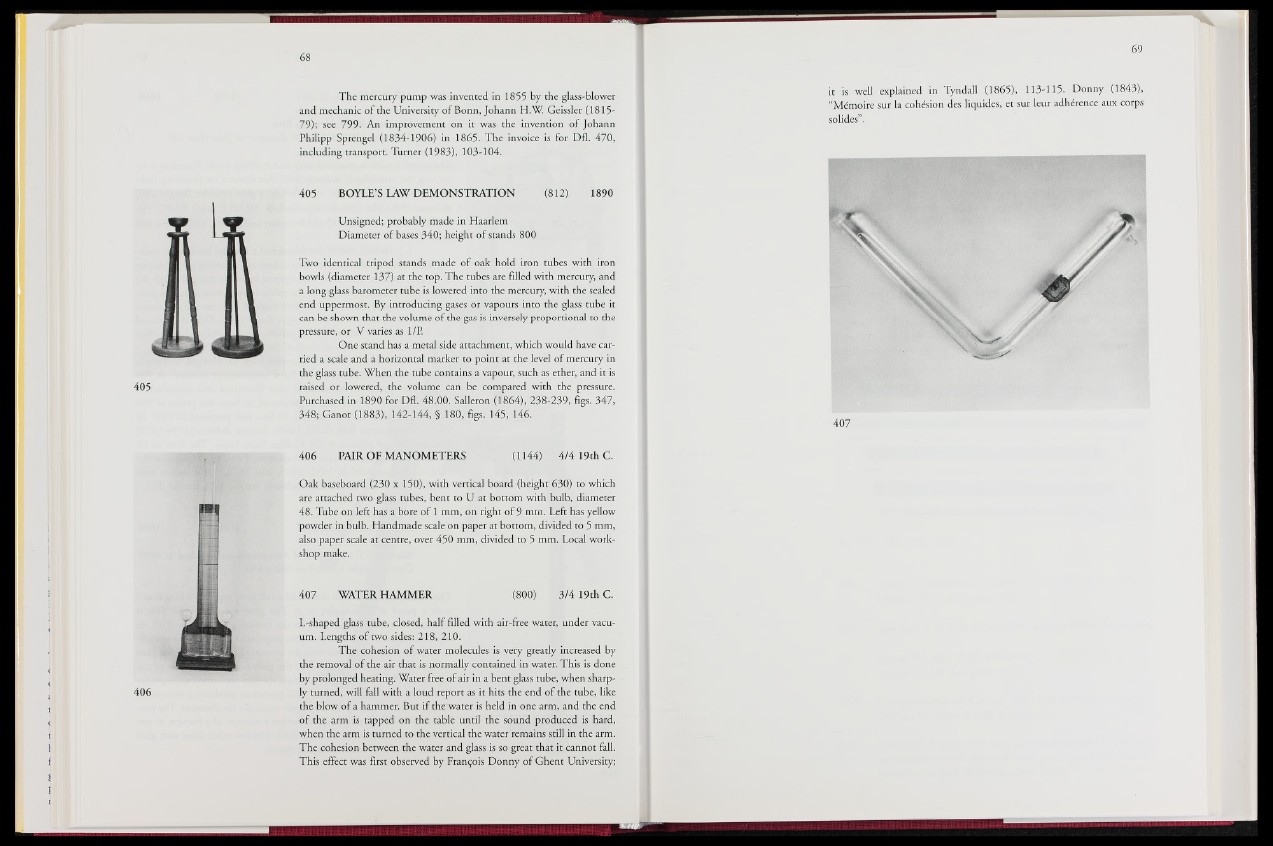
The mercury pump was invented in 1855 by the glass-blower
and mechanic of the University of Bonn, Johann H.W. Geissler (1815-
79); see 799. An improvement on it was the invention of Johann
Philipp Sprengel (1834-1906) in 1865. The invoice is for Dfl. 470,
including transport. Turner (1983), 103-104.
405
405 BOYLE’S LAW DEMONSTRATION (812) 1890
Unsigned; probably made in Haarlem
Diameter of bases 340; height of stands 800
Two identical tripod stands made of oak hold iron tubes with iron
bowls (diameter 137) at the top. The tubes are filled with mercury, and
a long glass barometer tube is lowered into the mercury, with the sealed
end uppermost. By introducing gases or vapours into the glass tube it
can be shown that the volume of the gas is inversely proportional to the
pressure, or V varies as 1/P.
One stand has a metal side attachment, which would have carried
a scale and a horizontal marker to point at the level of mercury in
the glass tube. When the tube contains a vapour, such as ether, and it is
raised or lowered, the volume can be compared with the pressure.
Purchased in 1890 for Dfl. 48.00. Salleron (1864), 238-239, figs. 347,
348; Ganot (1883), 142-144, § 180, figs. 145, 146.
406 PAIR OF MANOMETERS (1144) 4/4 19th C.
Oak baseboard (230 x 150), with vertical board (height 630) to which
are attached two glass tubes, bent to U at bottom with bulb, diameter
48. Tube on left has a bore of 1 mm, on right of 9 mm. Left has yellow
powder in bulb. Handmade scale on paper at bottom, divided to 5 mm,
also paper scale at centre, over 450 mm, divided to 5 mm. Local workshop
make.
407 WATER HAMMER (800) 3/4 19th C.
L-shaped glass tube, closed, half filled with air-free water, under vacuum.
Lengths of two sides: 218, 210.
The cohesion of water molecules is very greatly increased by
the removal of the air that is normally contained in water. This is done
by prolonged heating. Water free of air in a bent glass tube, when sharply
turned, will fall with a loud report as it hits the end of the tube, like
the blow of a hammer. But if the water is held in one arm, and the end
of the arm is tapped on the table until the sound produced is hard,
when the arm is turned to the vertical the water remains still in the arm.
The cohesion between the water and glass is so great that it cannot fall.
This effect was first observed by François Donny of Ghent University;
it is well explained in Tyndall (1865), 113-115. Donny (1843),
“Mémoire sur la cohésion des liquides, et sur leur adhérence aux corps
solides”.
407